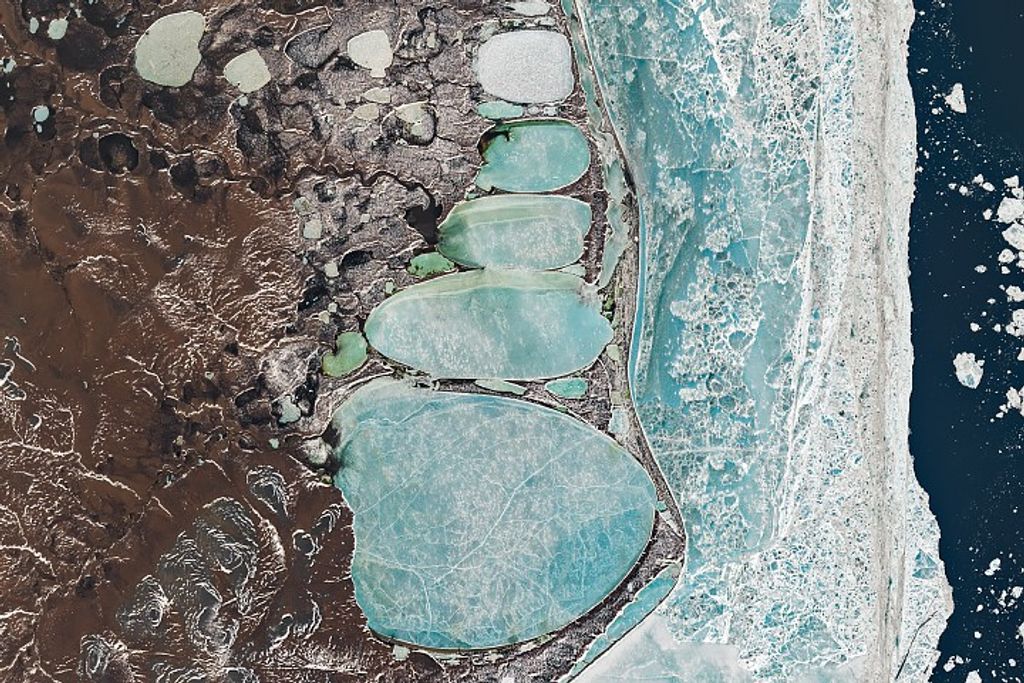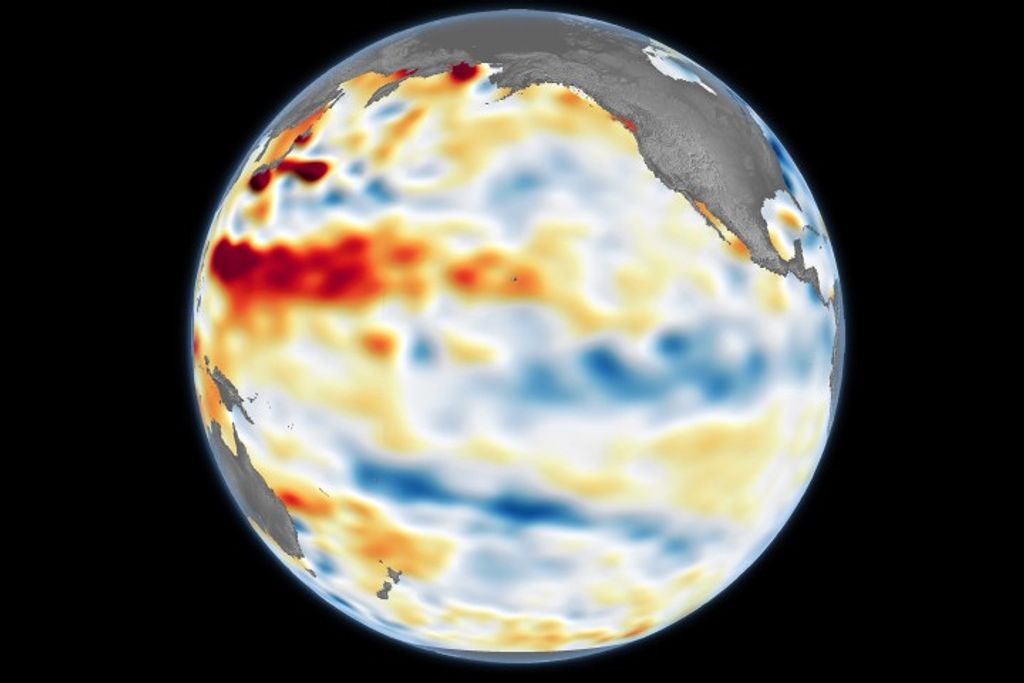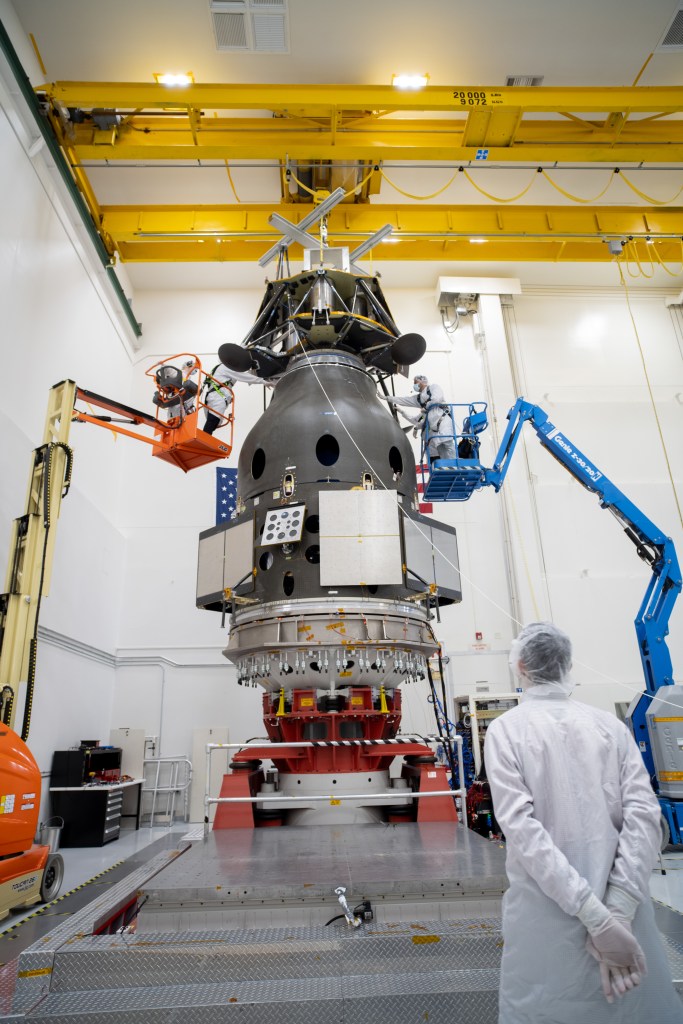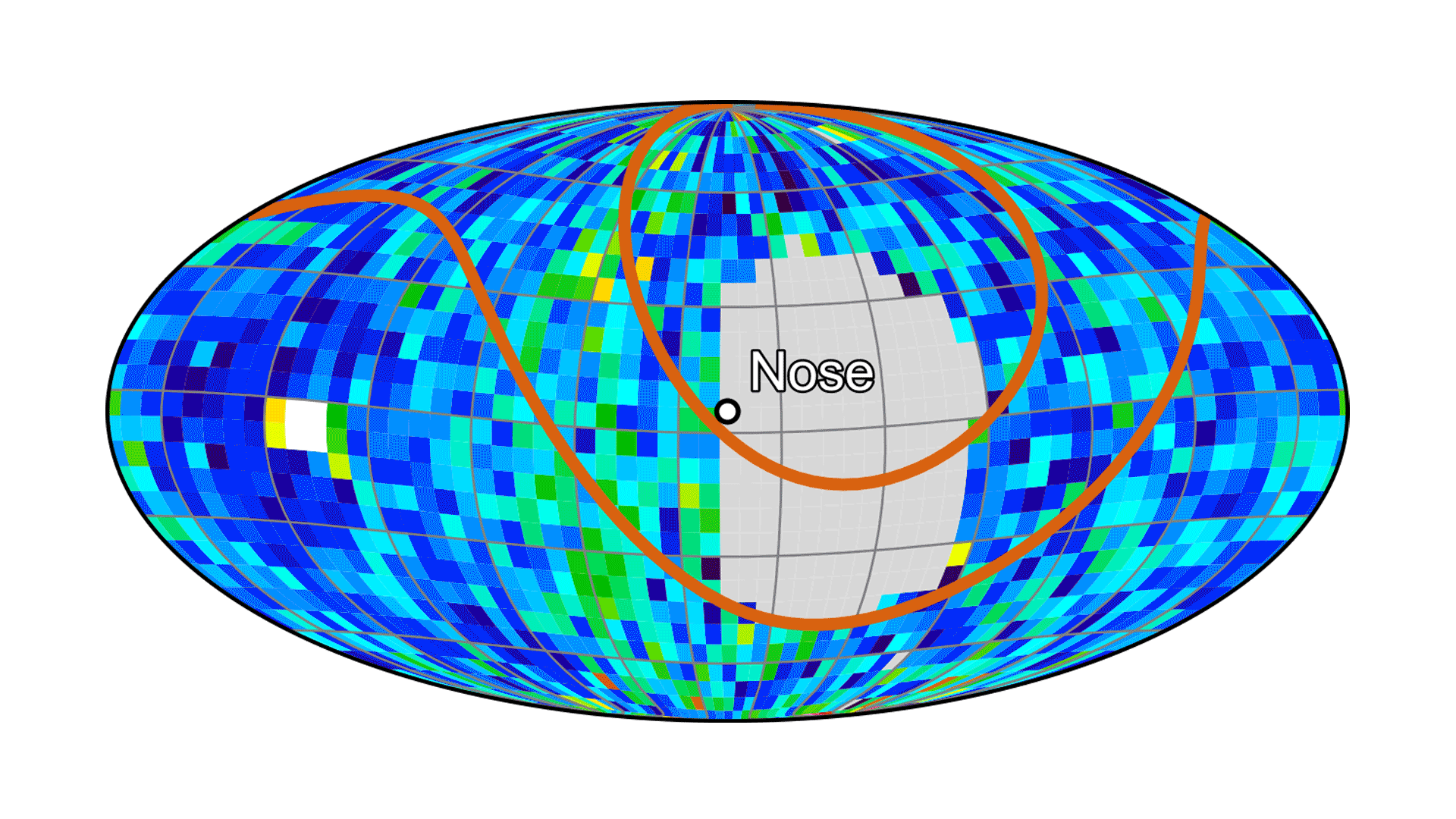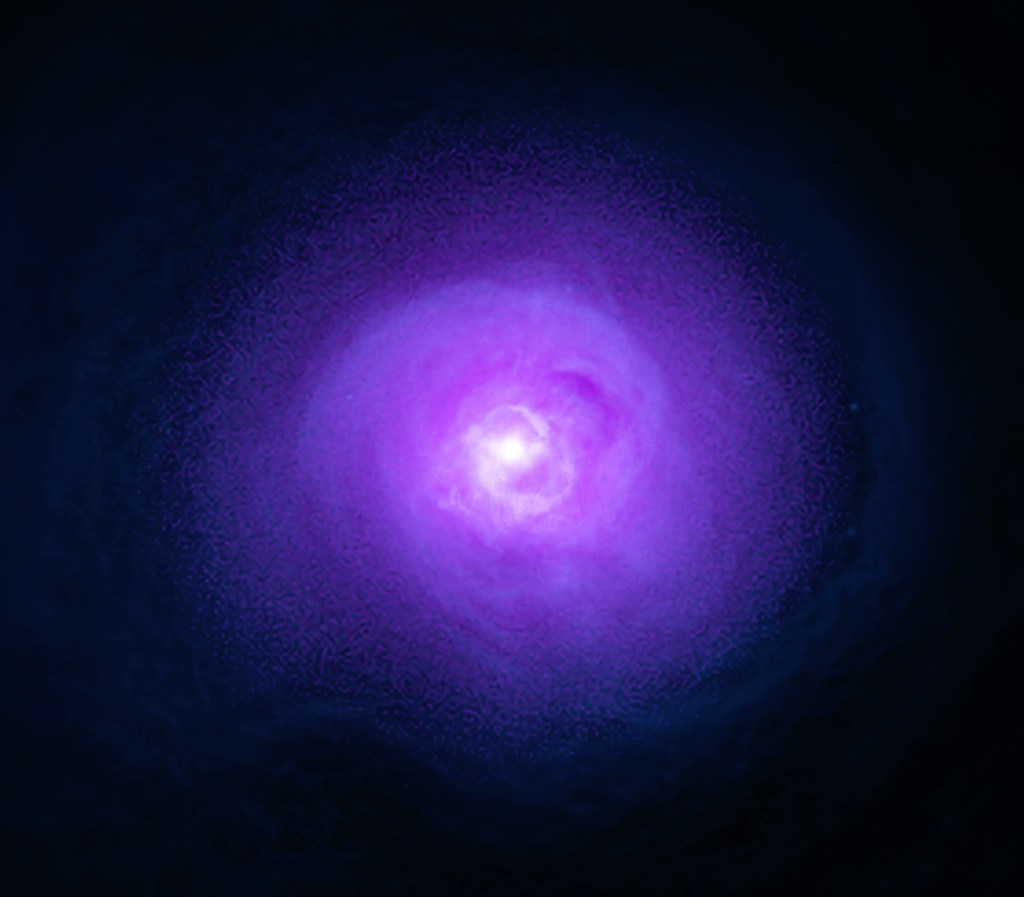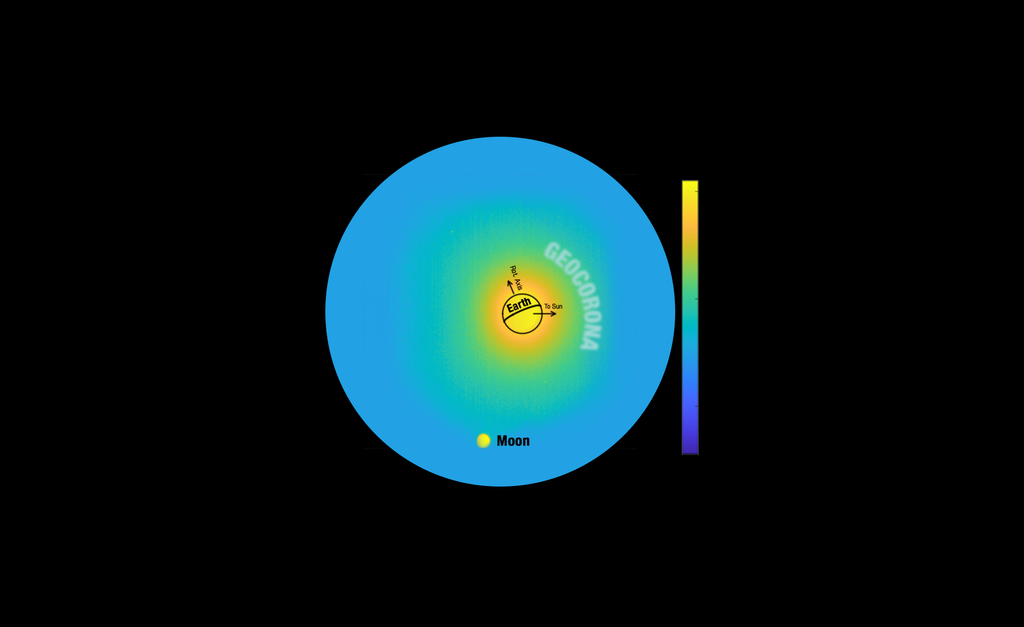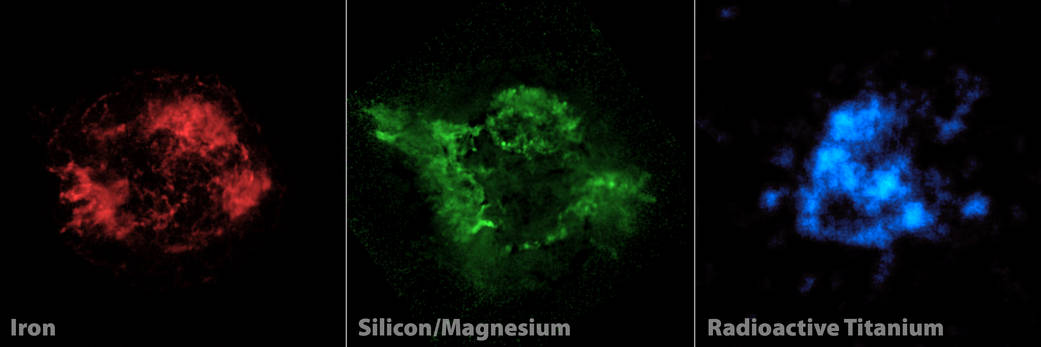
Elements making up the shredded remains of a massive star that exploded in a supernova are highlighted in this three-panel view. Red and green show iron, and both silicon and magnesium, respectively, as seen by NASA’s Chandra X-ray Observatory. Blue shows radioactive titanium-44, mapped by NASA’s Nuclear Spectroscopic Telescope Array, or NuSTAR, for the first time.
The radioactive titanium map amounts to new evidence in the case of why Cassiopeia A, and other massive stars, explode. The radioactive material glows in X-rays all the time, while the iron and other elements only glow in X-rays after they are heated by shock waves sent out from the explosion. For this reason, the radioactive titanium provides a more direct look at the heart of the explosion, and tells researchers what happened right when the star blasted apart.
The supernova explosion was not driven by jets, a realization to come out of the NuSTAR data. The green Chandra map shows that jets left imprints in material at the outer portions of the supernova remnant; if the blast had been directly spurred by these jets, then researchers would have expected the radioactive material seen by NuSTAR to have the same jet pattern. As the blue map does not match the green one, the jet-driven models of supernovas are ruled out.
Image credit: NASA/JPL-Caltech/CXC/SAO








